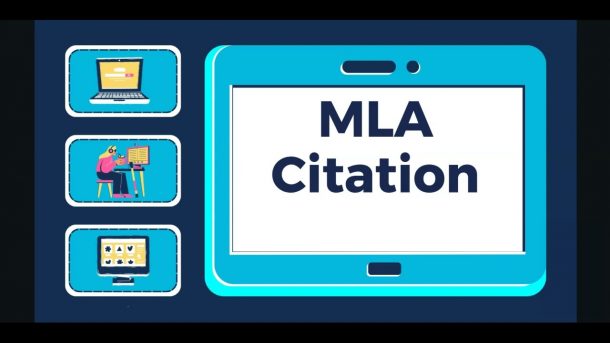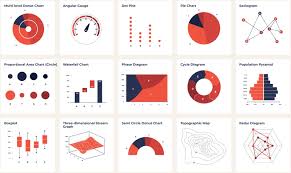When students and scholars think of the Modern Language Association (MLA) style, they typically imagine essays about novels, poems, or literary criticism. The MLA Handbook, however, extends far beyond written texts. In a world increasingly defined by visual and multimodal expression, researchers must also learn how to cite works of art, films, installations, performances, and even buildings.
Properly citing non-textual works is not only a matter of academic formality — it is a matter of ethical authorship. Every visual or performative piece represents the intellectual and creative labor of an artist. Whether one references Picasso’s Guernica, a Bauhaus building, a Marina Abramović performance, or a Netflix documentary, proper citation ensures respect, traceability, and scholarly rigor.
This essay explores how MLA style adapts to non-textual works. It discusses key citation principles, explains specific cases (artworks, architecture, performances, visual media), and presents a comparative table summarizing formats and examples. The goal is not to memorize rigid templates, but to understand how to apply MLA’s logic flexibly to diverse creative media.
The Logic Behind MLA Citations for Non-Textual Works
MLA citation is built on a core principle of universality: every source, regardless of medium, must identify who created it, what it is, where it can be found, and when it was produced or accessed. This principle ensures that readers can trace a work back to its origin, even if the format or medium differs drastically.
From Text to Image
In traditional humanities research, textual citation is straightforward: books, journal articles, or online essays all have authors, titles, and publication details. But visual or performative works pose different challenges.
For instance:
-
Who is the author of an architectural design — the lead architect, the firm, or the entire construction team?
-
How do we “quote” a dance or performance that exists only as a fleeting live event?
-
How can we credit a digital artwork that constantly evolves or changes form?
MLA’s 9th edition (2021) responds to such challenges with a template-based approach rather than rigid categories. Each citation identifies core elements in this order:
Author. Title of Source. Title of Container, Other Contributors, Version, Number, Publisher, Publication Date, Location.
For non-textual works, the “container” and “location” often refer to the institution, exhibition, website, or streaming platform where the work appears.
For example:
Van Gogh, Vincent. Starry Night. 1889, Museum of Modern Art, New York.
This simple citation already tells readers who made the work, what it is, when it was made, and where it currently resides.
Why MLA Matters Beyond Text
In art, architecture, and performance studies, MLA style serves three essential purposes:
-
Academic Integrity – It acknowledges creative ownership and avoids plagiarism.
-
Interdisciplinary Accessibility – It allows scholars from different fields to understand and locate referenced works.
-
Analytical Clarity – Clear citations help distinguish between the object of study and critical commentary about it.
Without consistent citation, a paper analyzing “performance art in the 1970s” could easily blur references between artworks, artists, and documentation. MLA style keeps that distinction transparent.
Applying MLA to Art, Architecture, and Design
Citing Works of Visual Art
Citing artworks such as paintings, sculptures, photographs, or installations follows a general pattern. The creator’s name appears first, followed by the title in italics, the date, and the institution or collection where it is housed.
Basic format:
Artist’s Last Name, First Name. Title of Work. Year, Institution or Collection, City.
If you reference a digital reproduction or online source, add the website and access date:
Da Vinci, Leonardo. Mona Lisa. 1503–06, Louvre Museum, Paris, Louvre.fr, www.louvre.fr/en/explore/the-palace/mona-lisa. Accessed 2 Mar. 2025.
When citing an artwork viewed in an exhibition, include the exhibition name and venue:
Kusama, Yayoi. Infinity Mirrored Room – The Souls of Millions of Light Years Away. 2013, Yayoi Kusama: Infinity Mirrors, The Broad, Los Angeles.
Citing Architecture and Built Works
Architectural citation requires identifying the designer(s), building name, location, and date of completion.
Basic format:
Architect’s Last Name, First Name. Name of Structure. Date of Construction, City, Country.
For example:
Wright, Frank Lloyd. Fallingwater. 1939, Mill Run, Pennsylvania.
If you reference a digital model or photograph of the structure, cite the source as well:
Wright, Frank Lloyd. Fallingwater. 1939, Mill Run, Pennsylvania. Photograph by Carol Highsmith, Library of Congress, www.loc.gov/item/2014632038.
In cases where multiple architects or firms collaborated, MLA recommends listing the primary architect or the firm’s name:
Foster + Partners. The Gherkin (30 St Mary Axe). 2004, London.
Architecture often exists as both design (a conceptual work) and structure (a physical object). MLA allows citation of either form, depending on context — whether the paper discusses the building’s design philosophy or its material construction.
Citing Design and Installations
Design pieces, multimedia installations, or conceptual art often defy easy categorization. In such cases, prioritize authorship, title, and exhibition context:
Eliasson, Olafur. The Weather Project. 2003, Turbine Hall, Tate Modern, London.
If referencing documentation, such as photographs or catalogs, add the source:
Eliasson, Olafur. The Weather Project. 2003, Turbine Hall, Tate Modern, London. Photograph by Andrew Dunkley, Tate Images.
Documenting Performances and Visual Media
Performance and time-based works — dance, theater, film, television, and digital media — require special treatment because they may have multiple contributors (actors, directors, choreographers) and exist in multiple versions (live, recorded, streamed).
Citing Live Performances
For performances experienced in person, list the title, creator(s), performer(s), venue, city, and date of performance.
Basic format:
Title of Performance. By Author/Playwright, directed by Director, performance by Performer(s), Venue, City, Date of performance.
Example:
Hamlet. By William Shakespeare, directed by Robert Icke, performance by Andrew Scott, Almeida Theatre, London, 15 Mar. 2024.
If the performance is part of a festival or tour, include that context:
Abramović, Marina. The Artist Is Present. Performance, Museum of Modern Art, New York, 2010.
Citing Recorded or Filmed Performances
If you reference a filmed version rather than a live event, the “container” becomes the platform or medium (DVD, streaming service, or YouTube).
Hamilton. By Lin-Manuel Miranda, performance by Leslie Odom Jr. and Phillipa Soo, directed by Thomas Kail, Disney+, 2020.
The Nutcracker. Choreography by Marius Petipa and Lev Ivanov, performance by The Royal Ballet, filmed at the Royal Opera House, 2018.
Citing Films and Television
For film and television, MLA prioritizes the title followed by key contributors (usually the director) and production details.
Basic format:
Title of Film. Directed by Director’s Name, Production Company, Year.
Example:
Parasite. Directed by Bong Joon-ho, CJ Entertainment, 2019.
If accessed via a streaming platform, add that information:
Roma. Directed by Alfonso Cuarón, Netflix, 2018.
Documentaries and episodes follow the same logic:
Planet Earth II. Narrated by David Attenborough, BBC Studios, 2016.
“Hitting the Apex.” Formula 1: Drive to Survive, narrated by Will Buxton, season 5, episode 3, Netflix, 2023.
Comparative Overview
| Medium | Key Elements to Include | Example Citation (MLA 9th ed.) |
|---|---|---|
| Painting / Sculpture | Artist, Title (italicized), Year, Museum or Collection, City | Van Gogh, Vincent. Starry Night. 1889, Museum of Modern Art, New York. |
| Architecture | Architect, Building Name, Year, City, Country | Wright, Frank Lloyd. Fallingwater. 1939, Mill Run, Pennsylvania. |
| Performance (Live) | Title, Creator, Director, Performers, Venue, City, Date | Hamlet. By Shakespeare, dir. Robert Icke, perf. Andrew Scott, Almeida Theatre, London, 2024. |
| Film / TV | Title, Director, Production Company, Year | Parasite. Dir. Bong Joon-ho, CJ Entertainment, 2019. |
| Digital Art / Installation | Artist, Title, Year, Venue or Platform | Eliasson, Olafur. The Weather Project. 2003, Tate Modern, London. |
This table illustrates that while media differ, MLA’s core structure — creator, title, context, and date — remains consistent.
Challenges and Adaptations in a Digital Age
As art and media evolve, so too must citation practices. The rise of digital and ephemeral art forms presents new challenges for MLA users.
Digital and Interactive Art
Works hosted on websites, social platforms, or interactive installations may change dynamically. MLA allows citation of a version or access date to indicate which iteration the researcher observed.
Refik Anadol. Machine Hallucinations: Nature Dreams. 2022, ARTECHOUSE, New York, RefikAnadol.com, Accessed 10 Jan. 2025.
If the work exists only online, include the full URL and access date:
Beeple. Everydays: The First 5000 Days. 2021, OpenSea, opensea.io/assets/everydays, Accessed 12 Feb. 2025.
Social Media and Ephemeral Performance
Performance art shared through social media (e.g., Instagram or TikTok) raises questions about authorship and preservation. MLA advises treating the creator’s handle as the author and the platform as the container.
Abramović, Marina (@marinaabramovic). “7 minutes of stillness.” Instagram, 3 May 2023, www.instagram.com/p/xxxxxx.
This flexible approach acknowledges that art can exist in both physical and digital dimensions simultaneously.
Ethical and Contextual Considerations
When citing non-textual works, scholars must balance accuracy with respect. For indigenous art, collaborative works, or community projects, ensure that citation respects cultural ownership and consent. MLA encourages including multiple creators or groups where appropriate.
For example:
Anishinaabe Nation Artists. Birch Bark Canoe Installation. 2018, Canadian Museum of History, Gatineau.
This ensures inclusivity and ethical representation within academic work.
Conclusion: Expanding Scholarship Beyond Text
MLA style has long been associated with the written word, but today’s scholarship demands a broader vision. As art, architecture, and performance increasingly merge physical, digital, and experiential dimensions, citation practices must evolve accordingly.
By understanding the principles rather than the formulas of MLA style — author, title, context, and date — researchers can confidently cite any creative medium. Whether referencing a centuries-old painting or a viral digital installation, the goal remains the same: to honor creators, enable verification, and support clear academic communication.
In a world where knowledge is no longer confined to the page, MLA’s adaptability ensures that research remains rigorous, ethical, and inclusive — no matter the medium. The art of citation, in this sense, becomes an art form itself: a bridge between creative expression and scholarly precision.




